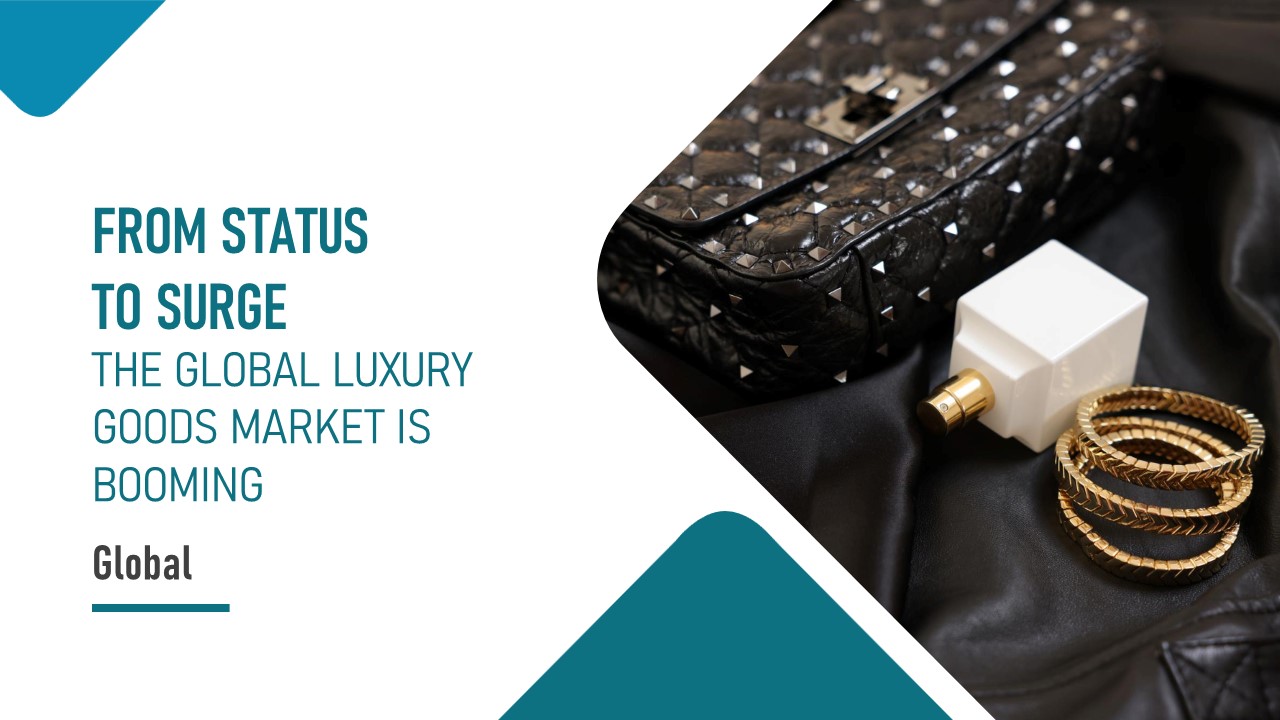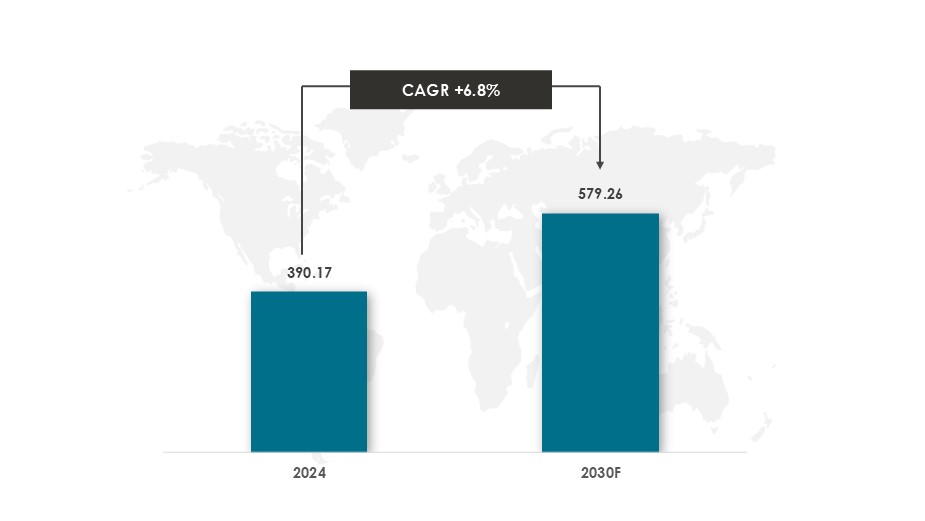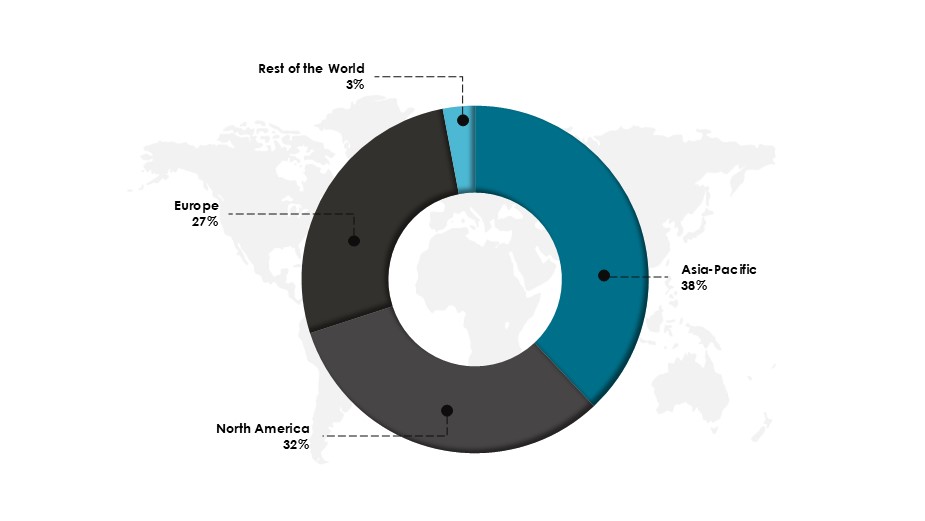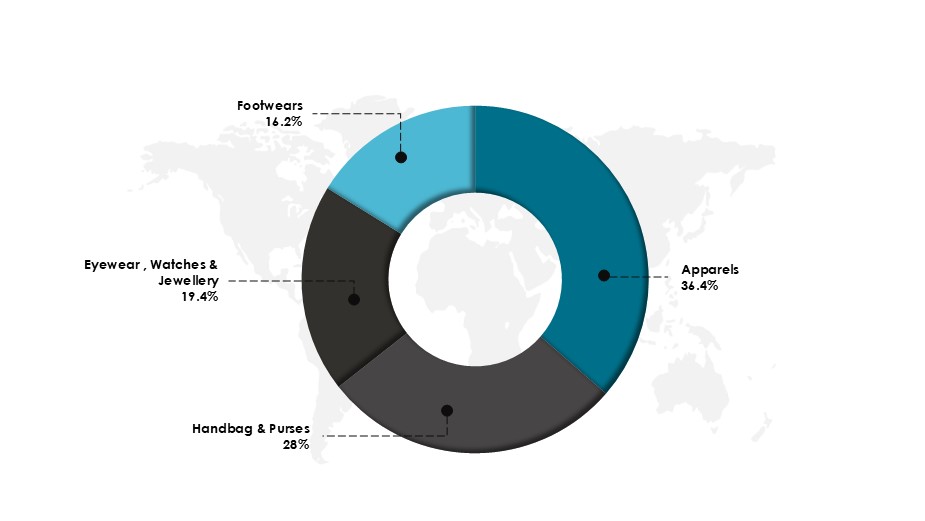
The Global Luxury Goods Market is Booming
The Global Luxury Goods market encompasses a wide range of high-end products such as watches, cosmetics, perfumes, automobiles, handbags and fashion, which are known for their premium quality, brand-value exclusive collections.
Luxury Brands focuses on premium quality by using superior materials and attention to detail, which ensures their products are a work of art, unique, and sophisticated.
Influence of Consumer Trends such as rising disposable incomes, experiential luxury, digital innovation, and sustainability shape luxury brands, while wearing one of these brands remains a status symbol that tells the world you have taste, style, and money.
Market Growth and Forecast
The Global Luxury Goods Market size was valued at $390.17 billion in 2024 and is projected to grow at a CAGR of 6.80% during the forecasted period 2025-2030.

The Global Luxury Goods Market is expected to reach $579.26 billion by 2030.
In addition, the luxury market is expanding as Millennials and Gen Z actively seek out premium, sustainable, and digitally enhanced experiences, with trends such as “quiet luxury” reshaping consumer preferences, reflecting what defines value and exclusivity.

Market Developments

In 2023-2024, Gucci leads luxury innovation by incorporating generative Artificial Intelligence, phygital drops, and metaverse experiences that blend virtual fashion shows, digital exhibits, and NFTs with physical goods, also focusing on combined reality where digital buys come with exclusive real-world add-ons.

In 2024, Ralph Lauren promoted sustainability by launching apparel made from 100% recycled cotton, resulting in significant reductions in CO2 and other greenhouse gas emissions (33%), water usage (26%), and waste (94%) and donated $12.6 million to various social causes.

In 2025, Givenchy committed to ten sustainability resolutions, such as 100% traceable raw materials, 40% reduced product impact, 30% less fossil plastic, 50% lower CO2 emissions, and support for circularity and social inclusion.

In 2024, Tiffany & Co. became the first luxury jeweler with SBTi-approved net-zero targets, aiming to cut scope 1 and 2 greenhouse gas emissions by 70% and scope 3 by 40% by 2030, on track for a net-zero goal.

In 2023, Dior elongated into luxury hospitality by launching branded spas, a Paris Spa Cruise, and lifestyle pop-ups, creating immersive experiences that deepen customer engagement beyond fashion.
Global Luxury Goods Market – By Product Type
The global luxury goods market encompasses various types of luxury goods.
The Apparel segment held the largest market share of ~36.40% out of the global market, followed by the Handbags & Purses and Eyewear, Watches & Jewelry segments at ~28% and ~19.40%.

The apparel segment dominates the luxury market, driven by brands that implement personalized and tailored fashion to meet the growing consumer demand for high-quality designer clothing.
Global Luxury Goods Market – By Distribution Channel
The global luxury goods market is segmented into three parts: online, offline, and other distribution channels.

The offline distribution channel segment held the largest market share of ~65.50% out of the global market, followed by the online distribution channel segment at ~29.40% and other channels at 5.10%.
The online luxury sales segment is rapidly growing as brands adopt augmented reality (AR) and virtual reality (VR) to make online shopping more engaging, along with offering an easy return policy.
Stay tuned to Innovius Research for ongoing market insights and data-driven analysis.
Data Sources: Grandview Research, Bain, KMPG, StraitsResearch, Arizton, McKinsey, VogueBusiness, Forbes, and others.
Other Market Insights

